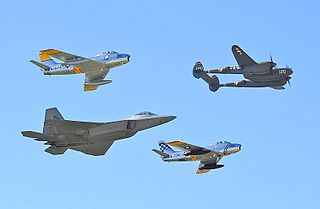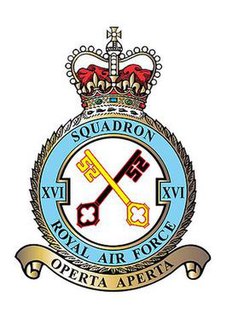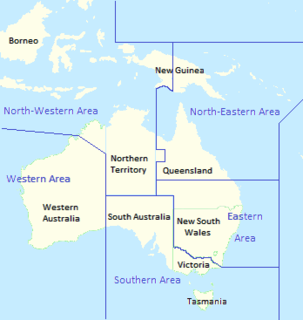| No. 83 Expeditionary Air Group | |
|---|---|
| Active | 1 April 1943 – 21 April 1946 9 July 1952 – 16 June 1958 1 April 2006 – present |
| Country | United Kingdom |
| Branch | Royal Air Force |
| Type | Operational headquarters |
| Part of | RAF Air Command |
| Home station | Al Udeid Air Base, Qatar |
| Motto(s) | A Deux Plus Forts (French for Two heads are better than one) [1] |
| Commanders | |
| Air Officer Commanding UK Air Component Commander | Air Commodore John J Stringer |
No. 83 Expeditionary Air Group is a group within the Royal Air Force, currently based at Al Udeid Air Base in Qatar.

The Royal Air Force (RAF) is the United Kingdom's aerial warfare force. Formed towards the end of the First World War on 1 April 1918, it is the oldest independent air force in the world. Following victory over the Central Powers in 1918 the RAF emerged as, at the time, the largest air force in the world. Since its formation, the RAF has taken a significant role in British military history. In particular, it played a large part in the Second World War where it fought its most famous campaign, the Battle of Britain.

Qatar, officially the State of Qatar, is a country located in Western Asia, occupying the small Qatar Peninsula on the northeastern coast of the Arabian Peninsula. Whether the sovereign state should be regarded as a constitutional monarchy or an absolute monarchy is disputed. Its sole land border is with neighbouring Gulf Cooperation Council (GCC) monarchy Saudi Arabia to the south, with the rest of its territory surrounded by the Persian Gulf. An arm of the Persian Gulf separates Qatar from the nearby Bahrain.
Contents
- History
- No. 83 (Composite) Group
- No. 83 Group
- Current operations
- Commanders
- 1943 to 1946
- 1952 to 1958
- 2006 to present
- References
- External links
Originally formed in 1943, during the Second World War it formed part of the 2nd Tactical Air Force (2TAF) and was known as No. 83 (Composite) Group. It provided support to Allied forces during the liberation of Europe. After being disbanded in 1946 it was re-established as No. 83 Group in 1952 to lead the 2TAF's units in Germany, until it disbanded again in 1958.

The RAF Second Tactical Air Force (2TAF) was one of three tactical air forces within the Royal Air Force (RAF) during and after the Second World War. It was made up of squadrons and personnel from the RAF, the air forces of the British Commonwealth and exiles from German-occupied Europe. Renamed as British Air Forces of Occupation in 1945, 2TAF was recreated in 1951 and became Royal Air Force Germany in 1959.

The final battles of the European Theatre of World War II as well as the German surrender to the Allies took place in late April and early May 1945.
On 1 April 2006 it was reformed as No. 83 Expeditionary Air Group Headquarters, to lead UK air operations in the Middle East. Activities include Operations Kipion (the UK's maritime presence in the Middle East) and Operation Shader (the UK's part of the military intervention against the Islamic State of Iraq and the Levant (ISIL)).
Operation Kipion is a long-standing maritime presence by the United Kingdom in the Persian Gulf and Indian Ocean to promote enduring peace and stability in the region, and ensure the safe flow of oil and trade. A permanent presence of 4 minesweepers forms the Mine Countermeasures element of this tasking.

Operation Shader is the operational code name given to the contribution of the United Kingdom in the ongoing military intervention against the Islamic State of Iraq and the Levant (ISIL). The operation began in Iraq on 26 September 2014, following a formal request for assistance by the Iraqi government. Prior to this, the Royal Air Force had been engaged in a humanitarian relief effort over Mount Sinjar since 8 August 2014, which involved multiple aid airdrops by transport aircraft and the airlifting of displaced refugees. By 21 October 2014, the intervention had extended onto Syria with the Royal Air Force only mandated to conduct surveillance flights over the country. On 2 December 2015, the House of Commons approved British airstrikes against ISIL in Syria. The UK is one of 79 countries in the Combined Joint Task Force that is directly fighting ISIL in the Iraqi Civil War and the Syrian Civil War.

















